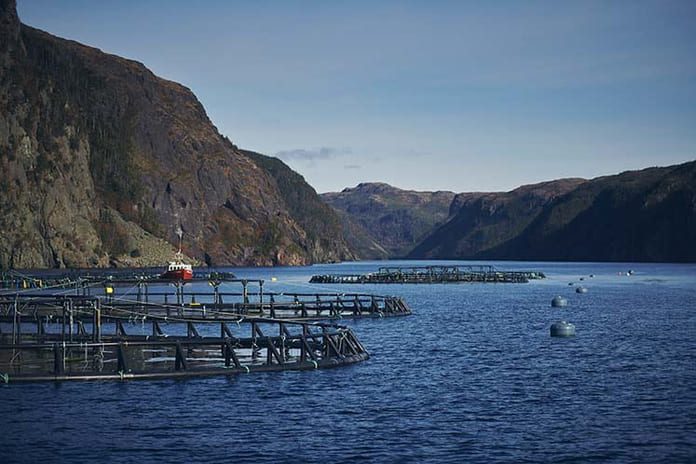It is now thought that 450,000 salmon may have died in mortality event at Mowi farm in Eastern Canada.
Earlier this month, Mowi reported a mortality event at one of its sites in Newfoundland in which it was stated that approximately 93,000 salmon had died from a total site number of 900,000.
This figure was released in line with Newfoundland and Labrador’s aquaculture AP 17 Public Reporting Policy mandating the disclosure of abnormal mortality of equivalent of 10 per cent or higher.
As of Tuesday, the mortality count at the site was 212,100 salmon – approximately 24 per cent of fish on site. According to the company it is expected that up to 450,000 dead salmon will be removed in total eventually – 50 per cent of the population on site.
The mortality event was thought to be the result of sudden low dissolved oxygen levels at the farm site.
Read more: 93,000 salmon die at Mowi facility in Newfoundland
The company’s updated report is posted on the Newfoundland Aquaculture Industry Association’s website. The statement reads:
“Under oversight of the department, the company is taking all responsible steps to address the incident. Mitigation measures include deeper nets and aeration equipment at the site. Department staff have been conducting sampling and observing seining activities, with the full cooperation of the company.”
The affected fish were at marketable size, and removal efforts are ongoing. Harvesting of the remaining live fish began on September 20.
Commenting on the difficulties of farming in the area, a Mowi spokesperson said: “The sea temperature profiles around Newfoundland are at the extremes – very low in winter and high in summer. This swing in temperature provides added challenges, for example, high summer temperatures increase the maturation of sea lice as well as increase harmful plankton blooms while decreasing oxygen levels.
This is the first cycle of salmon raised at this location, and we are confident the investment in deep netting and aeration equipment has helped protect the fish and improve survivability through the event. One cannot stop low levels of oxygen occurring at sea, but taking from this event, we will increase our monitoring in this particular area in the future and use this information to help mitigate this event from reoccurring.“

